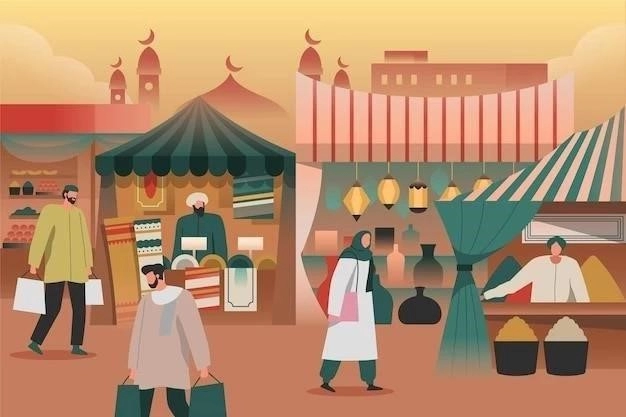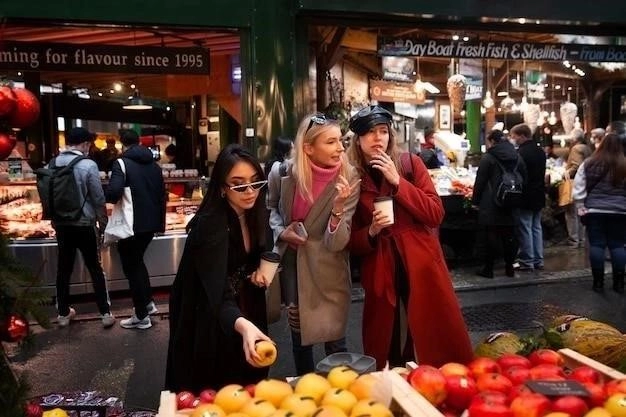The Grand Bazaar of Istanbul is more than just a marketplace; its a vibrant tapestry of history, culture, and commerce․ Nestled in the heart of Istanbuls old city, this labyrinthine network of covered streets and alleys has been a bustling center of trade for over five centuries, captivating visitors with its exotic charm and the allure of treasures untold․

A Legacy Forged in the Wake of Conquest
The Grand Bazaars story begins in 1455, shortly after the Ottoman conquest of Constantinople․ Sultan Mehmed II, seeking to establish the city as a thriving commercial hub, commissioned the construction of an expansive covered market․ The first building, an edifice dedicated to the trade of textiles, marked the birth of what would become the Grand Bazaar․
The Bazaar Expands: A Testament to Ottoman Prosperity
Over the following decades, the Grand Bazaar flourished alongside the burgeoning Ottoman Empire․ Its reach extended far beyond the confines of its walls, drawing in merchants and traders from across the empire and beyond․ By the 17th century, the bazaar stood as a pivotal point on the Mediterranean trade routes, a testament to the empires economic prowess․

Navigating the Labyrinth: A Sensory Overload
Today, the Grand Bazaar is a sprawling complex, encompassing over 60 streets and housing over 4,000 shops․ Its labyrinthine alleys, covered by vaulted ceilings and illuminated by soft, diffused light filtering through strategically placed skylights, create an atmosphere of timeless mystique․
Stepping into the Grand Bazaar is an assault on the senses․ The air hangs heavy with the aroma of exotic spices, the scent of strong Turkish coffee mingling with the sweet fragrance of Turkish delight․ The clamor of vendors hawking their wares, the rhythmic hammering of silversmiths, and the animated chatter of shoppers create a symphony of sound unique to this bustling marketplace․
A Treasure Trove of Turkish Craftsmanship
The Grand Bazaar is a paradise for shoppers, offering an eclectic mix of goods that reflect the diversity of Turkish crafts and traditions․ Here, one can find:
- Exquisite Carpets: Handwoven Turkish carpets, renowned for their intricate designs and vibrant colors, are a staple of the bazaar․ Skilled artisans weave intricate patterns, each knot telling a story passed down through generations․
- Gleaming Jewelry: Gold and silversmiths display their intricate creations, from delicate earrings and bracelets to elaborate necklaces and rings, each piece a testament to the enduring legacy of Ottoman craftsmanship․
- Aromatic Spices: The air hangs thick with the scent of spices, a sensory overload that transports visitors to far-off lands․ From pungent saffron and star anise to aromatic cardamom and cinnamon, the bazaars spice vendors offer a world of flavor․
- Ceramics and Pottery: The Grand Bazaar showcases the rich tradition of Turkish ceramics, with vendors displaying beautifully crafted bowls, plates, and tiles adorned with intricate patterns and vibrant glazes․
- Leather Goods: Turkey has a long and storied history of leatherworking, and the Grand Bazaar is an excellent place to find high-quality leather goods, from jackets and bags to belts and wallets․
Beyond Commerce: A Cultural Experience
The Grand Bazaar is more than just a shopping destination; its a living museum, a testament to Istanbuls rich history and cultural heritage․ As you navigate the labyrinthine alleys, take time to:
- Observe the Artisans: Watch skilled artisans at work, their hands moving with practiced precision as they create intricate carpets, hammer delicate jewelry, or paint intricate patterns on ceramics․
- Engage with the Vendors: Haggling is an integral part of the Grand Bazaar experience․ Engage with the vendors, practice your bargaining skills, and you might just walk away with a unique souvenir and a memorable story to tell․
- Savor Turkish Delights: Take a break from shopping and indulge in some Turkish delights, the sweet, gelatinous confections that come in a rainbow of colors and flavors․

The Grand Bazaar: A Timeless Legacy
The Grand Bazaar is a testament to Istanbuls enduring spirit, a place where the past and present intertwine seamlessly․ Its a place where one can lose themselves in the labyrinthine alleys, discover unique treasures, and experience the vibrant energy of a marketplace that has thrived for over five centuries․ A visit to Istanbul is incomplete without experiencing the sensory overload and historical significance of the Grand Bazaar․
Beyond the Baubles: Unveiling the Deeper Layers of the Grand Bazaar
While the Grand Bazaars allure as a shoppers paradise is undeniable, to perceive it solely through this lens is to miss its profound historical and sociological significance․ The Bazaar stands as a microcosm of Istanbul itself – a vibrant testament to the citys intricate fusion of East and West, tradition and modernity․
A Window into Ottoman Socioeconomics
The Bazaars very structure offers a glimpse into the meticulously organized socioeconomic system of the Ottoman Empire․ The concept of “bedesten” – the inner, vaulted core of the Bazaar – speaks to a time when security and trust were paramount for traders dealing in precious goods․ The surrounding hans, or caravanserais, served not only as lodging for traveling merchants but also as storage spaces and workshops, fostering a sense of community and collaboration within specific trades․
The Enduring Legacy of the Guild System
Though the Ottoman guild system is a relic of the past, its influence echoes within the Bazaars layout․ Observe how similar trades cluster together – coppersmiths alongside jewelers, carpet sellers near textile merchants․ This organization, a legacy of the guilds control over quality and apprenticeship, fostered a spirit of mentorship and knowledge transfer that continues to shape the Bazaars character․
The Art of the Bargain: More Than Just a Transaction
The practice of haggling, often daunting for first-time visitors, lies at the heart of the Bazaars social fabric․ Beyond the negotiation of price, its a ritual of engagement, a dance of wit and charm where relationships are forged alongside deals․ Embracing this custom, even with a degree of playful reluctance, opens doors to genuine connection with the Bazaars seasoned merchants․
Preservation Amidst Modernity: A Balancing Act
The Grand Bazaar, while steeped in history, is not frozen in time․ It continues to evolve, adapting to the rhythms of a modern metropolis․ The challenge lies in preserving its historical integrity while embracing the demands of contemporary commerce․ Efforts by both authorities and the Bazaars own community strive to strike this delicate balance – ensuring this iconic landmark remains a vibrant testament to Istanbuls enduring legacy for generations to come․

Navigating the Labyrinth: A Guide to an Enriching Experience
The Grand Bazaar, while exhilarating, can feel overwhelming for the uninitiated․ To ensure a rewarding visit, consider the following:
Strategic Timing and Preparation:
- Avoid peak hours: The Bazaar teems with activity, particularly on weekends and afternoons․ Opt for a weekday morning visit for a calmer experience․
- Dress appropriately: Modest attire, respecting local customs, is recommended․ Comfortable footwear is crucial for navigating the cobblestone streets․
- Carry Turkish Lira: While some vendors accept foreign currencies, transactions are smoother and often more advantageous with local currency․
Engaging with Respect and Savvy:
- Learn basic Turkish phrases: Even a few words like “merhaba” (hello) and “teşekkür ederim” (thank you) go a long way in fostering goodwill․
- Embrace the art of bargaining: View haggling as a good-natured exchange, starting with a counter-offer significantly lower than the initial asking price․
- Be discerning with purchases: While the Bazaar offers authentic treasures, be wary of counterfeit goods․ Inspect items carefully before committing to a purchase․
Beyond the Beaten Path:
- Explore the surrounding hans: Venture beyond the main arteries into the quieter hans, where youll find workshops specializing in specific crafts, offering a glimpse into traditional production methods․
- Pause for Turkish coffee or tea: Take a break from shopping to savor the local culture․ Enjoy a cup of Turkish coffee or apple tea at one of the many cafes tucked within the Bazaar․
- Engage with the history: Remember, the Grand Bazaar is more than a marketplace; its a living museum․ Take time to appreciate the architecture, observe the intricate tilework, and imagine the centuries of commerce that have unfolded within its walls․
The Grand Bazaar is a tapestry woven from the threads of history, culture, and commerce․ By approaching this vibrant world with respect, curiosity, and a touch of adventurous spirit, visitors are rewarded with an unforgettable journey into the heart of Istanbul․










